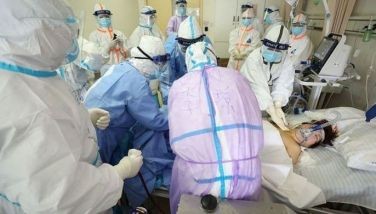Doctors from RP, other countries finding it harder to work in US
But in the wake of the terror concerns and the national immigration debate, health officials and some lawmakers worry that increasing restrictions and scrutiny threaten to undermine efforts to bring these doctors to regions where many US-born doctors are loath to work, and exacerbate the shortage of physicians in the country as a whole.
“We’re facing a real crisis,” said US Sen. Kent Conrad, a Democrat who, since 1994, has sponsored a temporary program that would give each state an allotment of 20 to 30 J-1 visa waivers.
These waivers allow foreign doctors to work in underserved areas for three to five years, with the incentive of eventually securing permanent residency in the
About 1,000 foreign doctors come to the
Following the
A new program run by the US Department of Health and Human Services failed to fill that federal void. The HHS has approved just 61 J-1 visas since the program began in 2003.
Conrad said most of that shortfall will be felt in rural
Meanwhile, the region is among the nation’s leaders in infant mortality, heart disease and many of the
It was never easy for foreign doctors to get work in the
Even before the 9/11 terror attacks, these professionals faced an arduous and expensive process that included professional tests and background checks before they could secure work and residency papers. Some doctors hire headhunter agencies to help them through the process.
The Sept. 11 attacks made the process more difficult. But health officials and doctors fear that the attempted terror attacks in
“The consensus seems to be that if you have a first name like Mohammed, you can forget it,” said Dr. Sanjay Chaube, a much-needed internist in the Hurricane Katrina-ravaged town of
“Apparently one of the guys was Indian. I just hang my head in shame because (he has) just tarred an entire community. You know how these things go,” said Chaube.
Health officials worry that new restrictions will not only harm residents of poor areas, but will also deepen a deficit of doctors in the United States currently estimated at 16,000 and affecting a mostly underserved 35 million Americans in every state.
Future projections offer little that is reassuring.
While the federal government predicts a shortfall of 24,000 doctors by the year 2020, others see a much wider gulf. A 2005 study predicted the gap could grow to 200,000 in the next 13 years.
By examining adjusted population figures, economic factors and trends such as decreasing doctor effort and an aging work force, the study group led by Dr. Richard Cooper came to the stark conclusion that while the population will continue to grow rapidly, the physician work force will remain flat – at best.
Cooper, who conducted his study while at the Medical College of Wisconsin and now works at the
Dr. Edward Hill, chairman of the World Medical Association and past president of the American Medical Association, thinks nothing short of government intervention can halt the doctor shortage.
“We have a deterioration in our number of primary care physicians – family doctors, internal medicine, (pediatricians), obstetricians and gynecologists,” Hill said. “We have a deterioration across the country.”
The shortages are most pronounced in poor areas.
While the
- Latest
- Trending




























